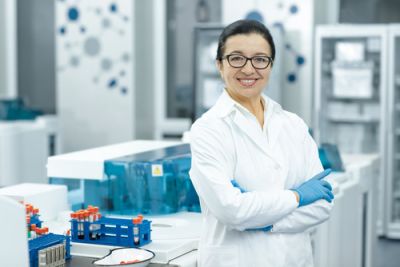 You may be familiar with Elizabeth Blackwell, the first certified female doctor in the United States. Most people recognize Marie Curie, the first woman to win a Nobel Prize. Women have made significant contributions to science for generations, but they have faced many barriers in getting recognition and being taken seriously for their work. In recognition of Women’s History Month, let’s remember some not-so-well-known women who earned their place in science and math.
You may be familiar with Elizabeth Blackwell, the first certified female doctor in the United States. Most people recognize Marie Curie, the first woman to win a Nobel Prize. Women have made significant contributions to science for generations, but they have faced many barriers in getting recognition and being taken seriously for their work. In recognition of Women’s History Month, let’s remember some not-so-well-known women who earned their place in science and math.
Maria Margaretha Kirch
Maria was born in 1670 in Prussia. Her father was an enlightened man of his times and believed that girls deserved the same education as boys. Maria was given an education and took an interest in astronomy. Women at the time were not allowed to attend university in Germany, but Maria married a famous astronomer at the time, Gottfried Kirch. Gottfried served as the royal astronomer of Frederick I of Prussia. Maria worked as Gottfried’s assistant, but she published many articles in scientific publications under her own name. She also discovered a comet and made contributions with her husband that could have only been discovered by a team. However, she was denied a position at the Berlin Academy because she did not have a university degree.
Beatrix Potter
Potter is best known for her children’s books, but she was also a nature enthusiast that led her to become a mycologist, a scientist of fungi. She lived in Victorian England, and though women of her time didn’t generally go to university, many were well educated by their parents. Potter was privately educated and through her family’s connections, she was able to consult with scientists of her time about mycology. Her contributions to science were rebuffed at the time, largely due to her gender and lack of formal training. Her papers are now under more serious study.
Maria Montessori
Most people are familiar with Montessori schools, but few remember that the founder graduated from the University of Rome in 1896 as a medical doctor. She went on to become an expert in pediatric medicine. Considering the time frame, it was an amazing achievement. She came to prominence for her work and activism to educate mentally disabled children. Her philosophy of education is well known and practiced around the world.
Ellen Swallow Richards
Richards was born in 1842 in Massachusetts. Her work in domestic science would lay the foundation for home economics. She entered Vassar College in 1868 as a special student, and it only took her two years to graduate with her bachelor’s degree. She then earned a Master of Arts. Her thesis chemically analyzed iron ore. She was the first female admitted to Massachusetts Institute of Technology to continue her studies and earned a bachelor’s degree. She could have been the first student to be awarded an advanced degree at MIT, but the college didn’t want a woman to have this honor. She waited until 1886 to earn her Master of Science in Chemistry. She helped form the American Home Economics Association, which gave women a place to study science in a time when women weren’t encouraged to pursue that field of study.
Leona Woods Marshall
Marshall was on the Manhattan Project, but she is often overlooked for her contributions to the project. She was the only female on the team. It’s likely that World War II helped her career, because there weren’t as many men available to hire. She was an amazing physicist who should be remembered along with Fermi and Oppenheimer, but her name rarely comes up when talking about physics.
Remember These Scientists
Historians are getting better about remembering the contributions of women to science. Today’s girls have more opportunities than ever before without having to deal with the issues that women of the past did. Be inspired by the courage of these scientists.